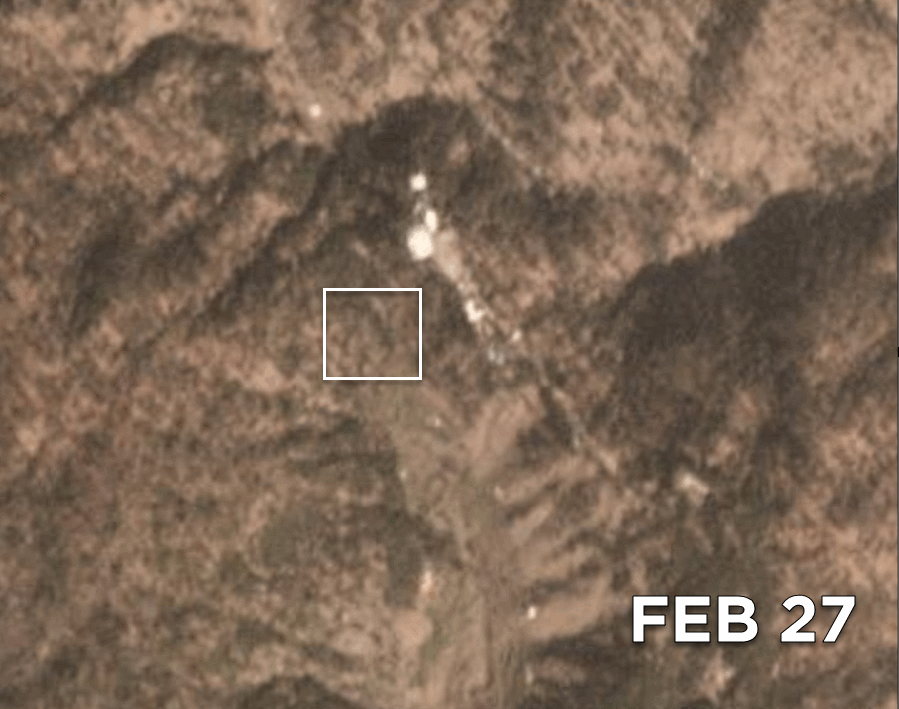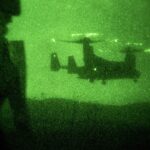The latest confrontation between India and Pakistan took place in the informational sphere as well as on the actual battlefield. The aerial combat between the Pakistan Air Force (PAF) and the Indian Air Force at the end of February was one of the most confusing and fluid events ever covered through open sources. Despite the thick “fog of war,” some of the uncertainties have been clarified with a high degree of confidence in the past days. As the record is set straight, it seems that Pakistan is emerging on the winning side of both the February 27 “dogfight” and the information war succeeding the event. While Indian Prime Minister Modi hoped to benefit from a show of force against Pakistan for the upcoming elections, the outcome was visibly negative for New Delhi.
The Indian Air Force raid on Jaish-e-Muhammad site in Kashmir was UNSUCCESSFUL. Tensions between India and Pakistan erupted after the Pakistan-based terror organization Jaish-e-Muhammad (JeM) killed at least forty Indian paramilitary forces in Kashmir on 14 February 2019. India held Islamabad accountable and retaliated with airstrikes on a JeM position (claimed to be a madrasa or training camp) in Kyber Pakthunkwa province (Pakistan) on 26 February. Despite claims of success, independent battle damage assessments (BDA) conducted via remote sensing show no change in the targeted structures. The Digital Forensic Research Lab geolocated the Indian strike near Jaba Top (Pakistan), matched the ordnance wreckage with the Israeli-made SPICE 2000 precision-guided munition that is used by India, and ultimately proved that the target was not destroyed. Change is visible only in the unpopulated forest adjacent to the JEM-affiliated structures, which remained intact. A spokesperson of the Pakistani military has suggested that the Indians missed their target, as they were tailed by Pakistani fast-movers. Alternatively, the Indian Air Force aircraft (reportedly Mirage 2000s) may have experienced problems with either the ordnance or the targeting pod. Reuters and The Drive came to the same conclusions.

Satellite imagery of the target area before and after the attack. (Source: @DFRLab via Planet Labs)
The PAF downed an Indian MIG-21. Following the Indian air strikes near Jaba Top, the PAF retaliated with air strikes on unknown targets in the Indian-controlled Kashmir territory. During the raid, India scrambled fighter jets to intercept the Pakistani aircraft, which led to a “dogfight” between the nuclear-armed countries. According to India, the Indian Air Force formation consisted of two MiG-21s (NATO Reporting Name: Bison), four Sukhoi Su-30s (Flanker-C) and two upgraded Mirage 2000s, which confronted 24 PAF jets: eight F-16s, four Mirage-3s and four JF-17 “Thunder” light fighters. An Indian MiG-21 was shot down by an AIM-120 (Block C) medium-range air to air missile (AMRAAM) launched by a Pakistani aircraft. The Indian MiG-21 Bison is an upgraded version of the baseline MiG-21 airframe (NATO reporting name: Fishbed). The Indian pilot ejected from his Bison aircraft, landing in Pakistan-administered Kashmir (PaK), where he was apprehended by Pakistani authorities.
India DID NOT shoot down a PAF F-16. New Delhi claims that an Indian Air Force MiG-21 Bison downed a PAF F-16 during the dogfight on 27 February. Supposedly, the PAF F-16 crashed in (PaK). Pro-Indian Twitter users argued that photos released by Pakistan, which show the wreckage of the MiG-21 Bison, were actually depicting the remains of the F-16’s engine cross section. The same Twitter users have accused the PAF of trying to hide the evidence of the F-16 crash. Russian and Indian media naturally picked-up the story. However, an investigation by Bellingcat concludes that “there is no compelling evidence offered as of yet than an F-16 would have been shot down, and all signs point to MiG-21 wreckage having been on display thus far.”
The PAF DID NOT down a second Indian fighter jet. While Pakistan initially claimed that two Indian fighter jets were shot down during the air battle of 27 February, the PAF only provided evidence of one and Islamabad later dropped the claim. Contrary to statements of pro-Pakistani Twitter accounts, an Indian Mi-17 helicopter crash in Kashmir on 27 February was caused by technical problems, not the PAF.
At this point, it remains unknown which PAK aircraft downed the MIG-21 Bison. While Islamabad refuted the assumption that F-16s were involved in the operation, India presented pieces of the AIM-120 medium-range air to air missile (AMRAAM) Block C, which were recovered after the dog fight. Out of the PAK’s inventory, only the F-16s are officially able to fire the AIM-120. Contrary to other claims, the contract number that appears on the AIM-120C debris did also include ARAAM sales to Pakistan, not only Taiwan. However, apart from the AIM-120C debris and Indian claims, there is no proof that confirms the involvement of PAK’s F-16s in the air battle over Kashmir.
Unofficial sources credit the JF-17 “Thunder” light fighter, a joint Pakistani-Chinese venture for the “kill”. In addition, a video tweeted by a PAF airmen from the 14th Air Superiority Squadron shows Hasan Siddiqui, the pilot responsible for downing the Indian MIG-21, celebrating next to his JF-17 Block II jet in Minhas Air Base. Siddiqui does, however, also pilot the F-16, as shown in a documentary about the PAF F-16s. While technical questions remain whether the JF-17 is capable of firing the AIM-120C, it is known that Pakistan is in the process of upgrading its JF-17 fleet and has successfully tested a beyond visual range air to air missile (BVRAAM). Furthermore, a defense.pk forum user posted a (unverified) photo from a JF-17 brochure of China’s National Aero-Technology Import and Export Corporation, which states that the aircraft is AMRAAM-capable. While the brochure does not name the AIM-120C and likely refers to Chinese-made AMRAAMs, the possibility that a JF-17 downed the MIG-21 is still worth considering. Both China and Pakistan have refused to comment thus far.
A combat debut of either F-16s or JF-17 against India could have major consequences for U.S.-Pakistani relations. As Pakistan acquired the F-16s to improve its counter-terror fighting capacity, it is believed that the U.S. end user agreement (which remains classified) prohibits the use of the aircraft against India except for cases of self-defense. The employment of the AIM-120C for the JF-17 would mandate even higher repercussions, as this would mean that Pakistan gave China access to an important U.S. air combat ordnance.
by the Incident Response Team (IRT)
Coincidentally, Lockheed Martin recently offered India the F-21, a enhanced F-16 Block 70 concept, to gain technological superiority over Pakistan. PAF sports a combination of A/B, Mid Life Upgrade (MLU) and Block 52s variants of the F-16.
- Russia Bombs Maternity Ward & Children’s Hospital in Mariupol As Part of Siege - 10 March 2022
- T-Intell’s OSINT Training Marks One Year Anniversary - 18 November 2021
- IS-K Never Left the Battlefield - 27 August 2021








What can I say, Mr Modi stupidity led to this escalation all because he wanted to win the next upcoming election. Now he has made himself laughing stock all around the world and made India look like a war monger.